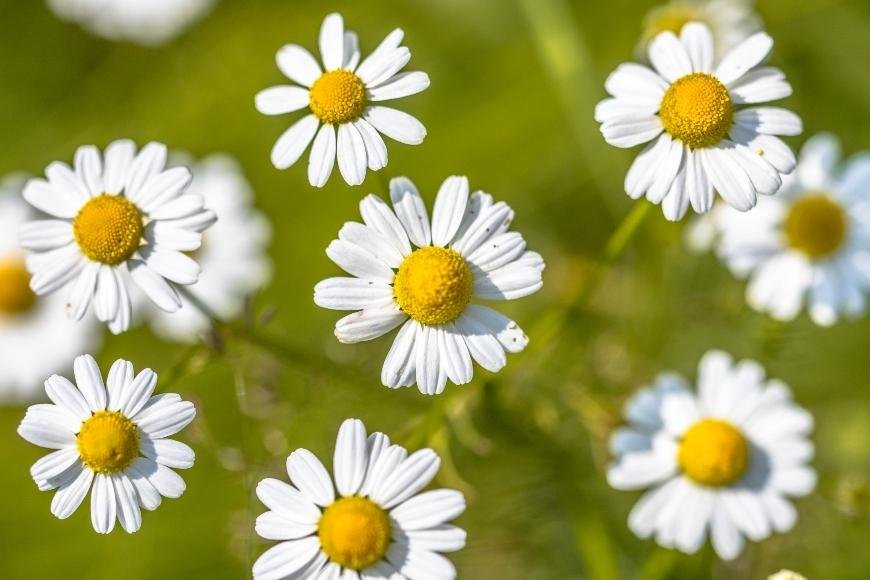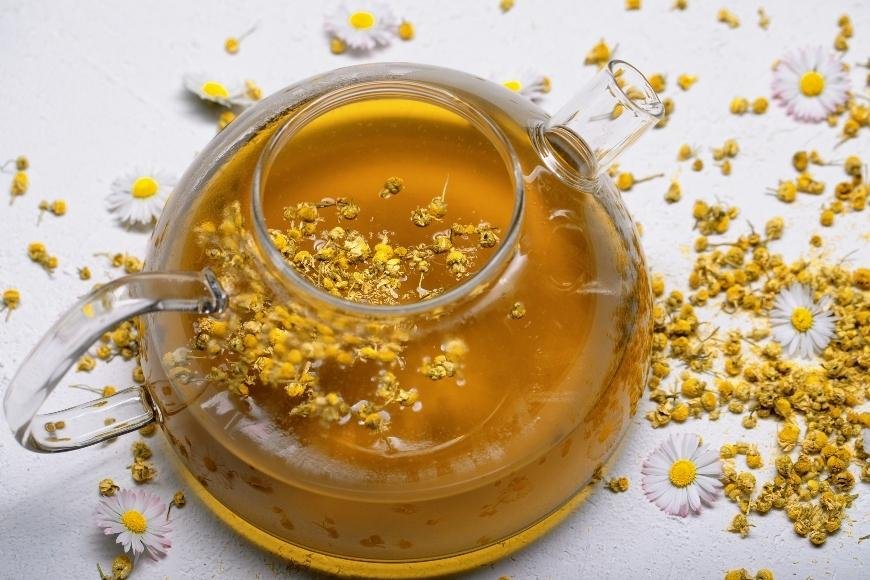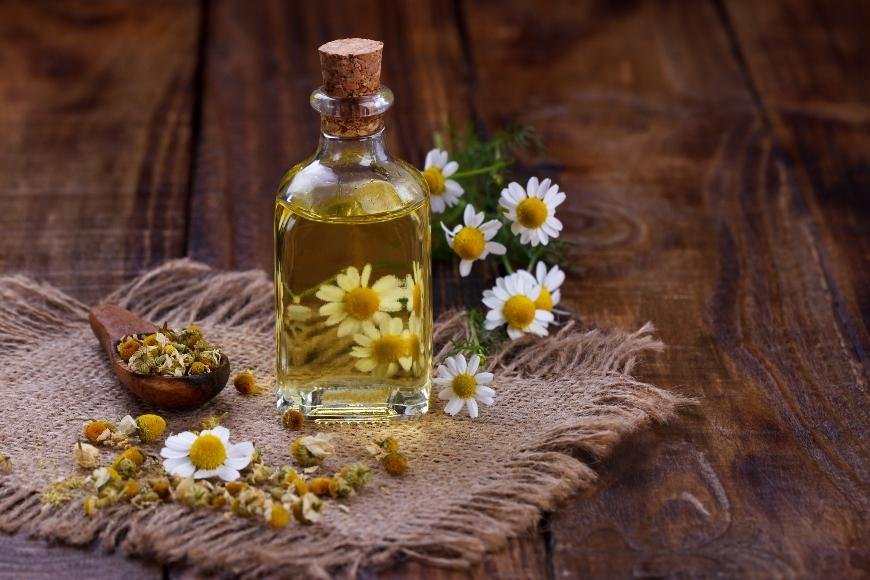How to Extract Chamomile
Learn how to extract Chamomile with our beginner-friendly guide, covering preparation, storage, and use. Experience chamomile benefits now!

Gaining proficiency in extracting chamomile is necessary for those seeking to reap the full rewards of this powerful herb. In this blog post, we will guide you through the process of extracting chamomile from its raw form into a potent and concentrated substance that can be used in various applications.
By understanding how to extract chamomile properly, you'll unlock the potential of Matricaria recutita or Matricaria chamomilla, which are known for their calming effects and numerous health benefits. We will discuss everything from gathering materials and preparing your chamomile flowers to creating a fine powder that can be added to tea or even a warm bath.
In addition, we'll cover important aspects such as storage methods and safety considerations when using your homemade chamomile extract. By the end of this comprehensive guide, you'll have all the knowledge needed to create high-quality extracts that harness the power of gallic acid and other beneficial compounds found within these delicate flowers.
Table of Contents:
- Chamomile Extract: A Natural Remedy for Insomnia, Anxiety, and Digestive Issues
- Get Ready to Make Chamomile Extract
- Using Your Chamomile Extract: Tips and Tricks
- Safety First: Tips for Making and Using Chamomile Extract
- FAQs in Relation to How to Extract Chamomile
- Conclusion
Chamomile Extract: A Natural Remedy for Insomnia, Anxiety, and Digestive Issues
Chamomile extract is a potent distillation of the calming and soothing compounds that have been employed for ages to treat numerous health conditions, found in chamomile blossoms.
Both Roman and German chamomile contain beneficial flavonoids and terpenoids that contribute to its therapeutic effects.
You can make your own chamomile extract at home using simple methods or purchase it from reputable sources online or in herbal product stores.
Extracting chamomile's active compounds allows you to control the quality of ingredients and tailor the potency to your preferences.
Gain the advantages of chamomile extract in a secure and efficient way by utilizing our instructions for creating your own or discovering an honest supplier.
Get Ready to Make Chamomile Extract

Extracting chamomile is easy with the right tools, so make sure you have these items:
- Organic dried chamomile flowers - free of pesticides.
- A clean glass jar with an airtight lid - for steeping the extract.
- High-proof alcohol - like vodka or Everclear to extract the active compounds.
- Cheesecloth or fine mesh strainer - for separating plant material from the liquid extract.
- Funnel - to transfer your finished extract into storage bottles without spills.
- Amber glass dropper bottles - ideal for storing and dispensing your homemade chamomile extract.
Having these items on hand will ensure a smooth extraction process, resulting in potent and effective chamomile extracts that can provide various benefits such as relaxation, sleep aid, and digestion support. Remember to prioritize safety when working with high-proof alcohol by avoiding open flames and properly ventilating your workspace.
Preparing the Chamomile
Get ready to extract the good stuff from your chamomile by using German or Roman varieties for the highest concentration of benefits.
Harvest fresh chamomile flowers when they're in full bloom, remove them from their stems, and let them air dry for a few days until the petals feel crisp and crumble easily.
If you don't have fresh flowers, opt for high-quality dried chamomile from reputable sources that offer organic options free of pesticides and contaminants.
Once your chamomile is dry, measure out about 1 cup (approximately 30 grams) to use in the extraction process.
How to Extract Chamomile for Maximum Benefits
Ready to extract the active compounds from your chamomile? Let's get started.
- First, place the dried chamomile flowers in a clean glass jar and cover them with high-proof alcohol like vodka or Everclear.
- Seal the container securely and give it a shake daily for two weeks, keeping it in an area of low light and cool temperature to ensure maximum extraction.
- After two weeks, strain out the plant material using cheesecloth or a fine mesh strainer into another clean glass container.
- Make sure to squeeze out any remaining liquid from the plant matter before discarding it.
- Voila. Your homemade chamomile extract is now ready for use.
Storing Your Chamomile Extract: Tips for Maximum Potency
Transfer your chamomile extract to a dark amber glass jar to protect it from light exposure. Make sure the jar is tightly sealed to prevent air or moisture from entering. Store the jar in a cool, dim area such as a cabinet or storeroom away from direct daylight and heat sources. Keep the extract out of reach of children and pets for safety reasons. Your chamomile extract can last up to two years without losing its effectiveness under these conditions. Check for changes in color, consistency, or smell to determine if the extract has degraded over time and should be discarded.
Using Your Chamomile Extract: Tips and Tricks

Get ready to relax and unwind with chamomile extract, known for its calming and soothing properties.
To make the most of chamomile extract, try adding a few drops to hot water or tea for an instant calming effect.
For a more creative use, incorporate chamomile extract into homemade skincare products to soothe and heal irritated skin.
Chamomile extract can also be used for aromatherapy purposes by adding it to an essential oil diffuser or creating a chamomile-infused oil.
Begin with a small quantity and adjust accordingly to get the optimal amount for your requirements.
Check out Healthline for further details on the advantages of chamomile extract.
Safety First: Tips for Making and Using Chamomile Extract
Ensure that only genuine chamomile is used for the extract to avoid potential toxicity.
Wear gloves and eye protection when handling the extraction process to avoid contact with irritating substances.
Work in a well-ventilated area to prevent harmful fumes from solvents used for extraction.
If you have a reaction to your self-made chamomile extract, get medical help right away and begin with a small amount.
Be cautious when mixing chamomile extract with other substances, including alcohol, to avoid unpredictable results.
FAQs in Relation to How to Extract Chamomile
How to Extract Chamomile
To extract chamomile, the first step is to harvest the flowers and allow them to dry. Once the flowers are dry, a solvent such as ethanol or glycerin is used to separate the active compounds from the plant material. Afterward, any remaining solids are strained out, and the homemade chamomile extract can be stored in an amber glass bottle.
How to Make Chamomile Extract at Home
Making chamomile extract at home is a simple process that requires patience for optimal results. First, dry fresh flowers and combine them with a solvent such as alcohol or glycerin. Let the mixture steep for several weeks while shaking occasionally. Finally, strain and bottle the liquid.
How Chamomile Extract Works
Chamomile extract contains various bioactive compounds that contribute to its therapeutic effects. The primary compound is apigenin, which has anti-inflammatory and mild sedative properties. Chamazulene gives it antispasmodic qualities, while bisabolol contributes antioxidant benefits. These components work together to provide relief from stress, anxiety, and other ailments.
How Roman Chamomile is Extracted
Extracting Roman chamomile follows similar methods as the German variety. First, fresh flower heads are harvested and dried under controlled conditions. Then, solvents like ethanol or glycerin are used for separation of active constituents through a maceration process. Finally, residual solids are filtered out, leaving pure concentrated liquid behind, ready for storage and usage.
Conclusion
How to make Chamomile Extract: Grab some dried chamomile flowers, steep them in alcohol, strain the liquid, and voila! You've got yourself some chamomile extract that can be used for tea or other herbal remedies.
But remember, safety first! Always be cautious when using any type of plant extract or drug.


































































































































